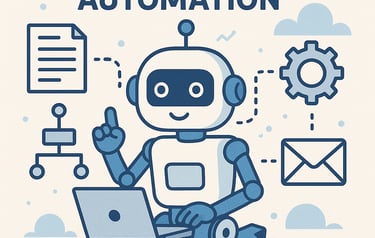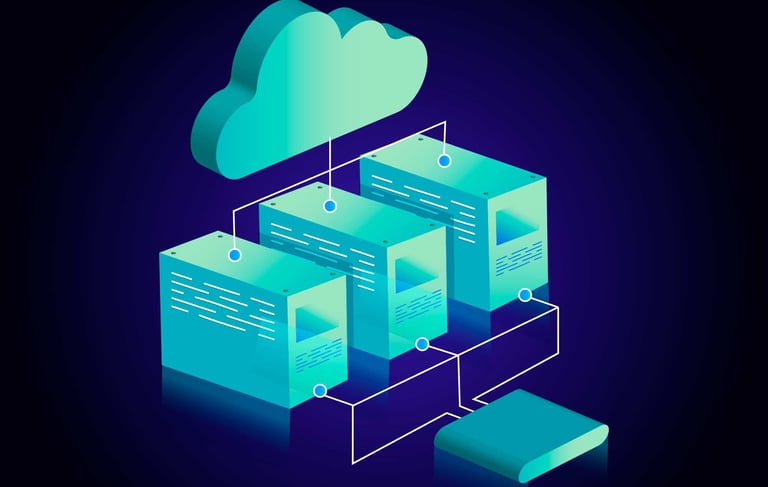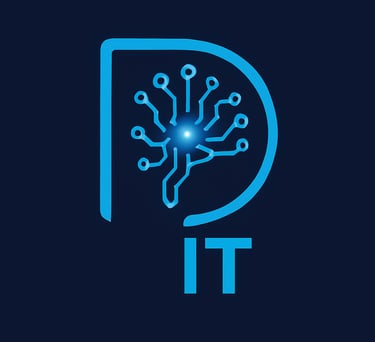
UiPath
UiPath is one of the world’s leading automation companies.
Known for pioneering Robotic Process Automation (RPA), it builds software robots that take over repetitive digital tasks, streamline workflows, and increasingly leverage AI to make automation smarter.
UiPath’s vision is simple yet powerful: empower people by freeing them from routine work so they can focus on creativity, strategy, and innovation.
UiPath: From Classic RPA to AI-Driven Agentic Automation
Organizations today face growing demands: doing more with fewer resources, ensuring compliance, and maintaining speed in a competitive market. Automation has become a critical enabler of digital transformation.
UiPath is one of the world’s leading automation platforms, originally known for Robotic Process Automation (RPA). Over time, it has evolved into a comprehensive ecosystem that integrates AI, process discovery, orchestration, testing, and analytics. UiPath is no longer “just RPA” it’s a platform that enables both classic rule-based automation and AI-powered, agentic automation.
This article explores:
What UiPath is and what it offers
Its infrastructure deployment models and their advantages/disadvantages
Licensing and cost models
Classic vs. agentic automation

What is UiPath?
UiPath is an end-to-end business automation platform that helps organizations streamline processes, reduce costs, and free employees from repetitive work.
Core Capabilities
Robotic Process Automation (RPA):
Automates rules-based tasks like data entry, reporting, or system integration.
AI-Powered Automation:
Uses machine learning, NLP, and computer vision to work with unstructured data (documents, emails, images).
Process & Task Mining:
Identifies automation opportunities by analyzing workflows.
Orchestration & Governance:
Centralized control of robots, licensing, and execution through UiPath Orchestrator.
Citizen Development:
Business users can create automations using UiPath StudioX without coding skills.
Analytics & ROI Measurement:
Automation Hub and UiPath Insights track automation impact and adoption.
Classic vs. Agentic Automation
Classic Automation
Rule-based, structured, deterministic.
Example: A robot logs into SAP, extracts data, pastes it into Excel, and sends a report.
Strengths: Fast, reliable, compliant.
Limitations: Cannot adapt to exceptions, ambiguity, or decision-making.
Agentic Automation
AI-powered automation with reasoning.
Example: A digital agent reads invoices, identifies missing fields, asks clarifying questions, and decides the next step.
Integrates with LLMs, AI Center, and Communication Mining.
Strengths: Handles semi-structured data, exceptions, and collaboration with humans.
Limitations: Requires AI governance, higher complexity.





UiPath Infrastructure Models
UiPath offers multiple deployment models to align with your IT strategy, compliance requirements, and scalability goals.
UiPath Automation Cloud (SaaS)
A fully managed SaaS platform hosted and maintained by UiPath. All services, Orchestrator, AI Center, Automation Hub, etc. are available out of the box.


How it works:
Customers log into the UiPath Automation Cloud portal.
UiPath provisions services automatically.
Robots can run in the cloud (serverless) or locally, all managed centrally.
Advantages:
Fast deployment with no hardware required.
Automatic updates, security patches, and scaling.
99.9% uptime SLA.
Reduces IT overhead significantly.
Disadvantages:
Data stored in UiPath’s data centers may be an issue for regulated industries.
Opex subscription model can be more expensive long-term.
Less customizable compared to self-hosted deployments.
UiPath Automation Suite (Private Cloud)
A self-hosted, containerized platform that brings all UiPath products into a Linux-based, Kubernetes-ready bundle. It is designed for enterprises that want cloud-like agility but retain infrastructure control.


How it works:
Deployed on Linux servers or Kubernetes clusters (in your data center or private cloud).
All UiPath modules (Orchestrator, AI Center, Automation Hub, Test Manager, etc.) run as containers.
Managed by your IT/DevOps team.
Advantages:
Enterprise-scale, future-proof, Kubernetes-native.
Consolidated deployment of all UiPath products.
Full control over data and compliance.
Easier scaling than traditional on-premises models.
Disadvantages:
Requires advanced Linux and Kubernetes expertise.
Higher upfront costs for infrastructure.
Longer deployment compared to SaaS.
Responsibility for uptime, security, and DR lies with your IT.
UiPath On-Premises (Classic Local Server Installations)
The traditional server deployment model where UiPath components are installed on Windows servers with supporting infrastructure (SQL Server, ElasticSearch, Redis, etc.).


How it works:
Orchestrator and supporting databases run on local servers.
Robots are deployed on endpoints within your network.
Other UiPath modules can be installed separately.
Advantages:
Maximum control over infrastructure and data.
Suitable for heavily regulated industries.
Familiar setup for IT teams already working with Windows Server environments.
Disadvantages:
Manual upgrades, patches, and scaling.
High CapEx (servers, storage, licensing).
Slower deployment and less flexibility than Cloud or Automation Suite.
Less future-proof compared to containerized approaches.
Hybrid Model
A mix of Automation Cloud and On-Prem/Automation Suite.


How it works:
Non-sensitive workloads run in the cloud.
Sensitive processes run on-premises or private cloud.
Central governance remains unified.
Advantages:
Combines agility of SaaS with security of on-prem.
Flexible workload placement.
Smooth transition path to cloud.
Disadvantages:
More complex governance and integration.
Mixed Opex and CapEx costs.
Requires tight coordination between IT and UiPath Cloud.
Licensing and Costs
UiPath follows a subscription-based licensing model with different frameworks and tiers.
Commercial Licensing Models
Flex
Separate units for Robots, AI, APIs, Agents.
More granular but more complex to manage.
Useful for organizations needing strict consumption tracking
Organizations can switch from Flex to Unified at renewal.
Automation Cloud (SaaS): Org/tenant-level centralized licensing.
Automation Suite (Private Cloud): Org-level or host-level licensing.
Standalone Licensing: Per-product, not scalable.
Unified Pricing
Based on Platform Units (PUs).
A single “currency” to consume robots, AI, and APIs.
Flexible and easier to manage.
Details at: ***Licensing UiPath***
Why UiPath Matters
UiPath enables organizations to move from basic task automation to enterprise-wide hyperautomation, powered by AI and intelligent agents.
Key benefits include:
20–40% cost savings.
24/7 digital workforce.
Consistent compliance.
Improved employee experience by eliminating repetitive work.
Conclusion
UiPath is no longer just about RPA, it is a strategic automation platform that can be deployed in the cloud, private cloud, or on-premises. Its flexible licensing and infrastructure options make it suitable for businesses of any size, across industries with varying compliance requirements.
As UiPath expands from classic automation into agentic, AI-powered automation, organizations can unlock even greater potential: digital workers that reason, adapt, and collaborate with humans.
The choice now lies with you:
Cloud for agility,
Automation Suite for private cloud scalability,
On-Prem for maximum control,
Hybrid for balance,
or Standalone for small-scale needs.
With UiPath, the future of automation is here, scalable, intelligent, and ready to transform your enterprise.


